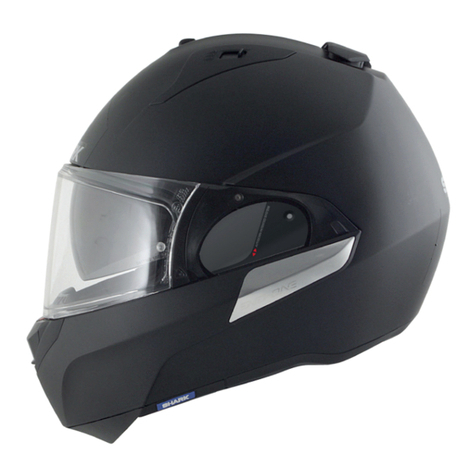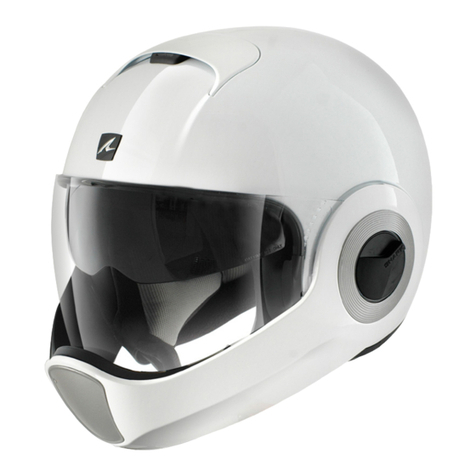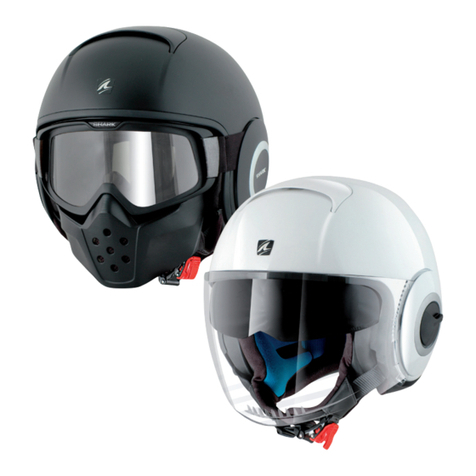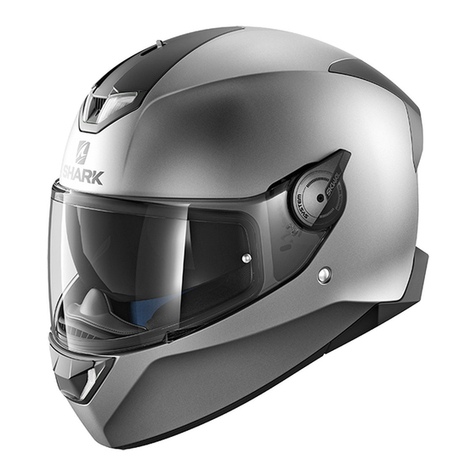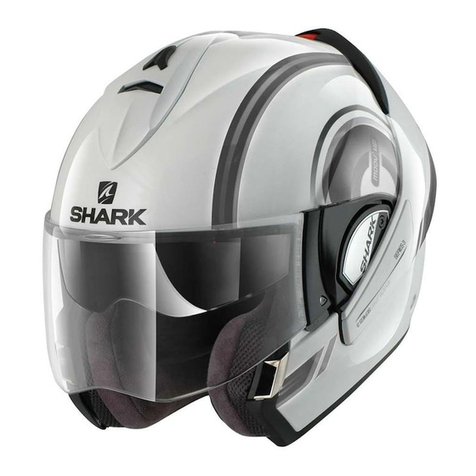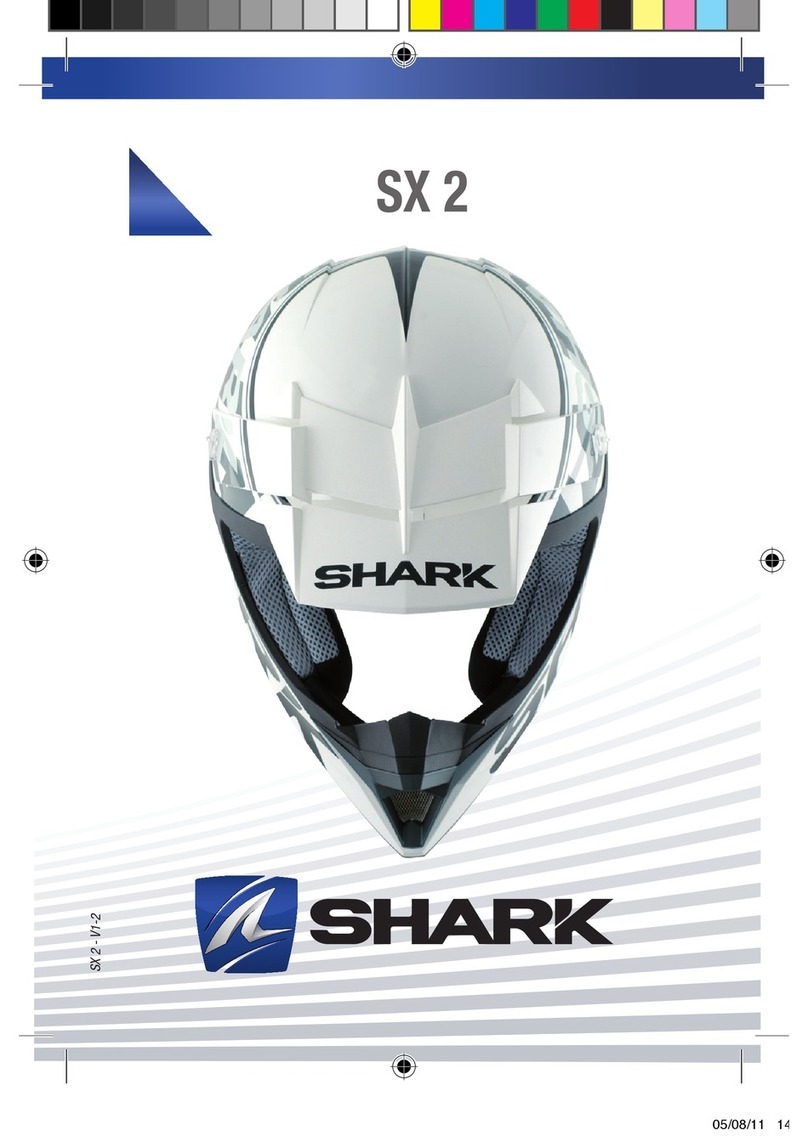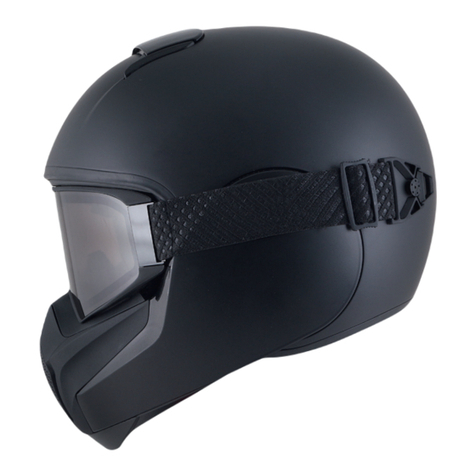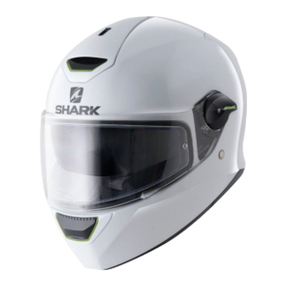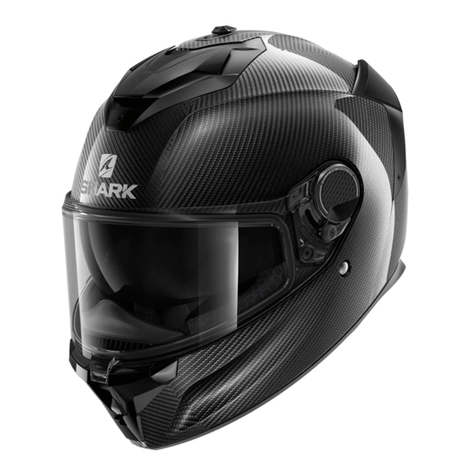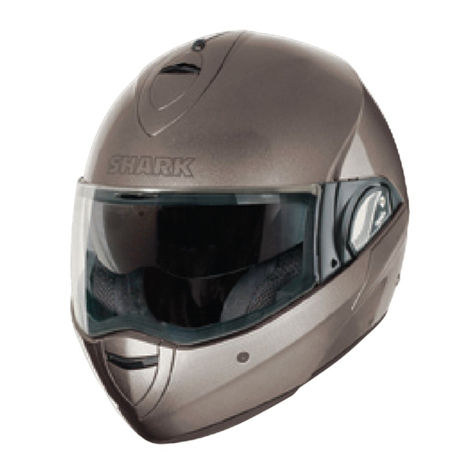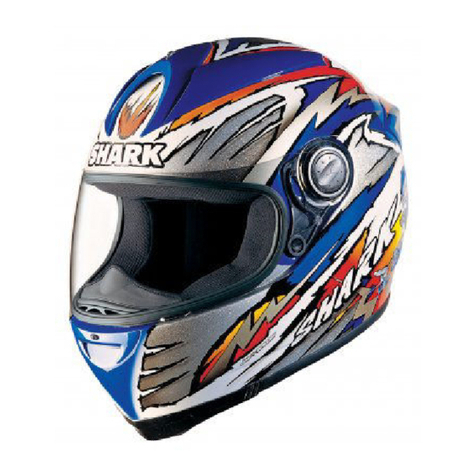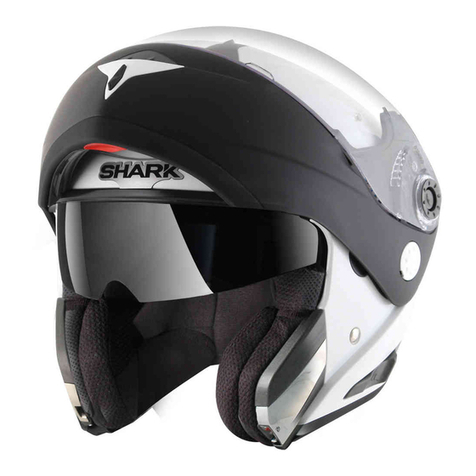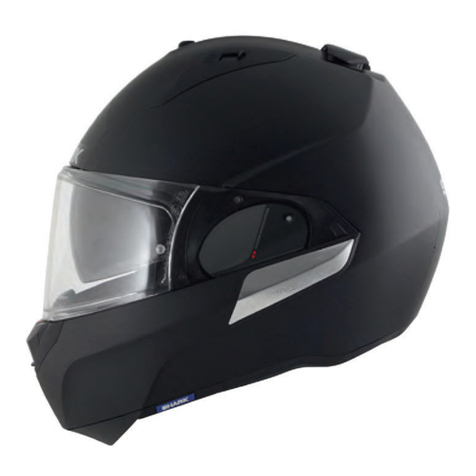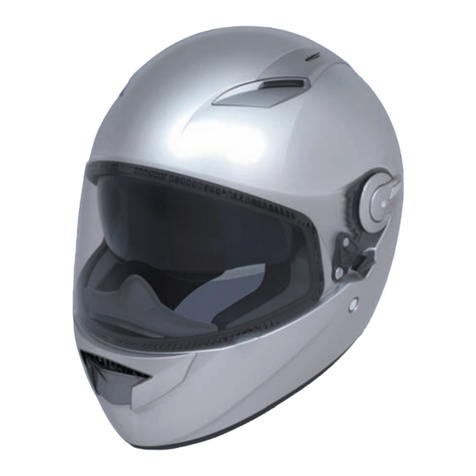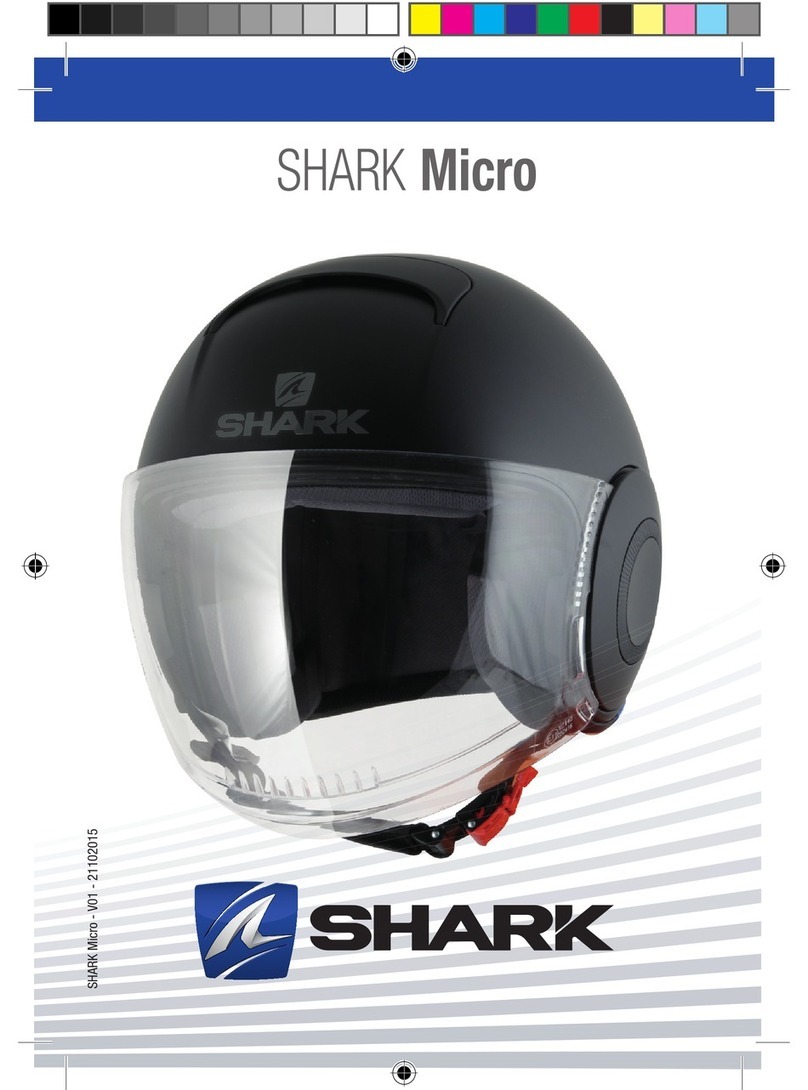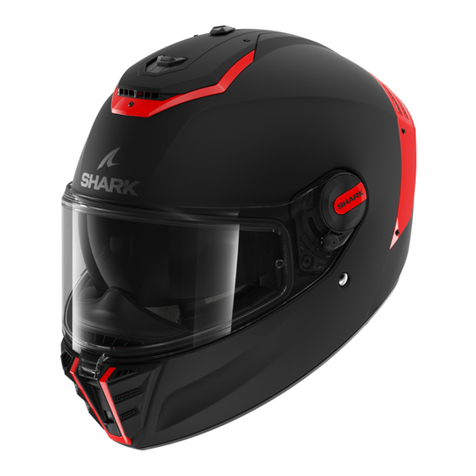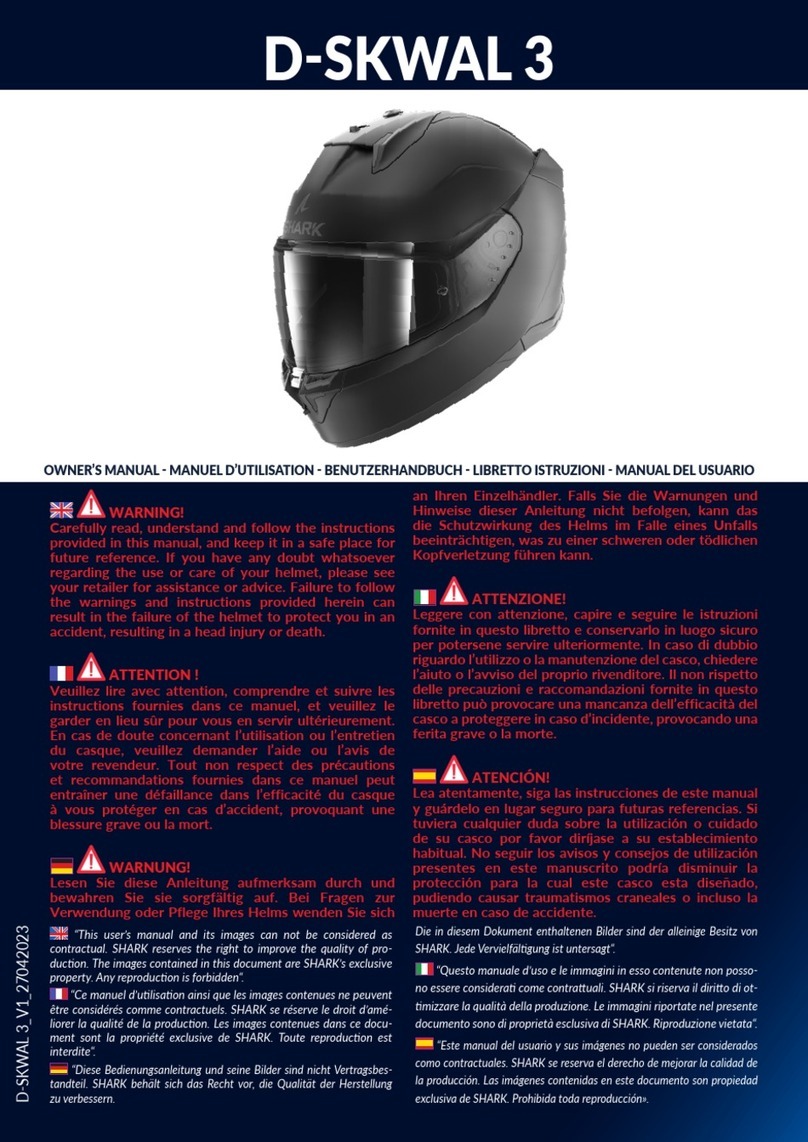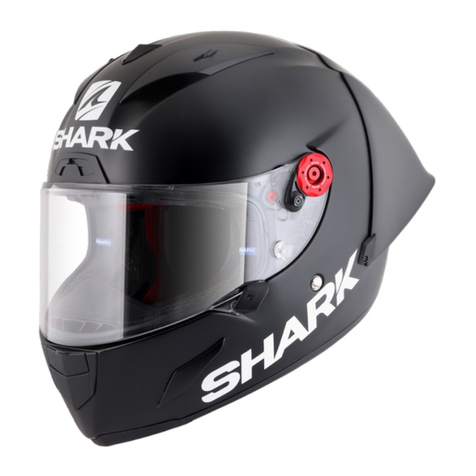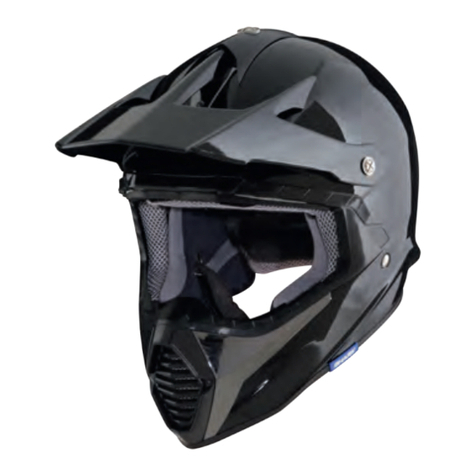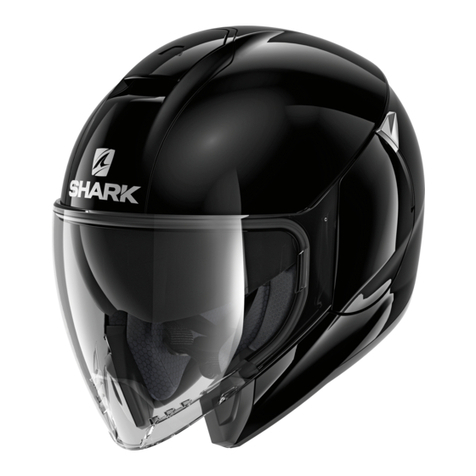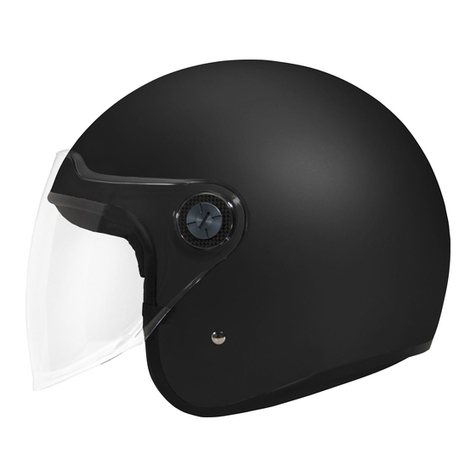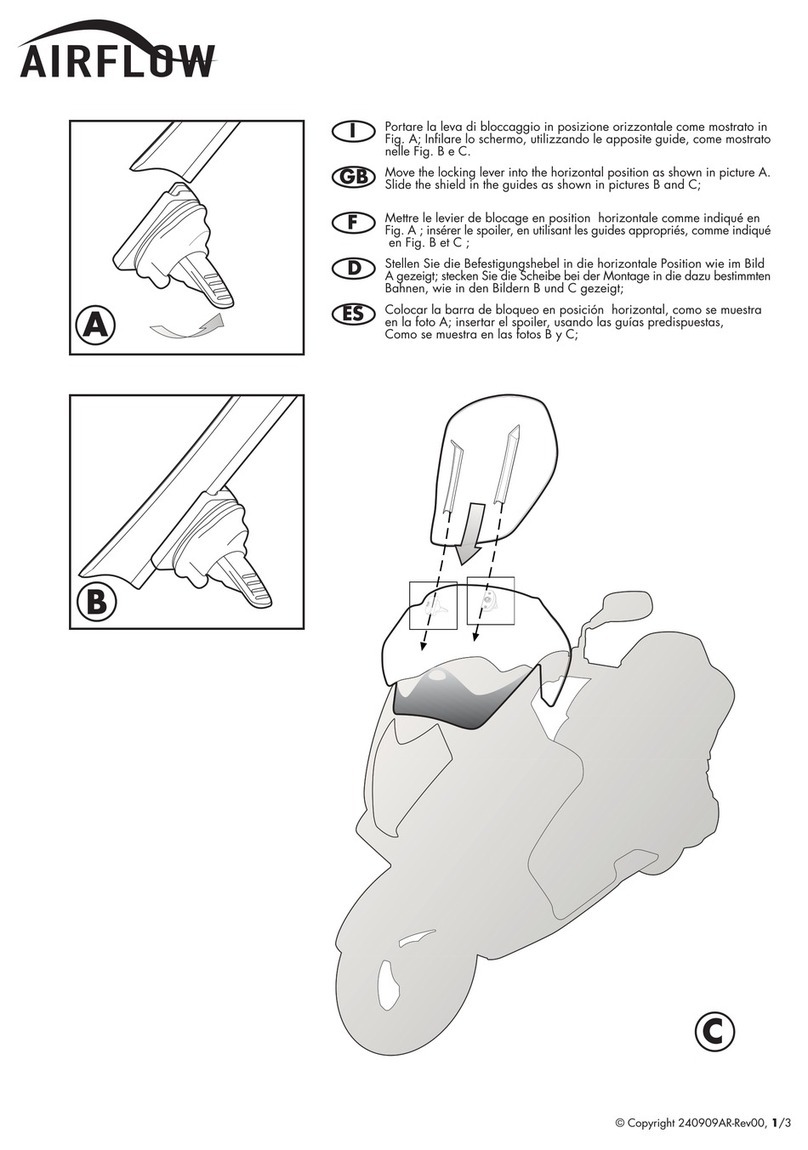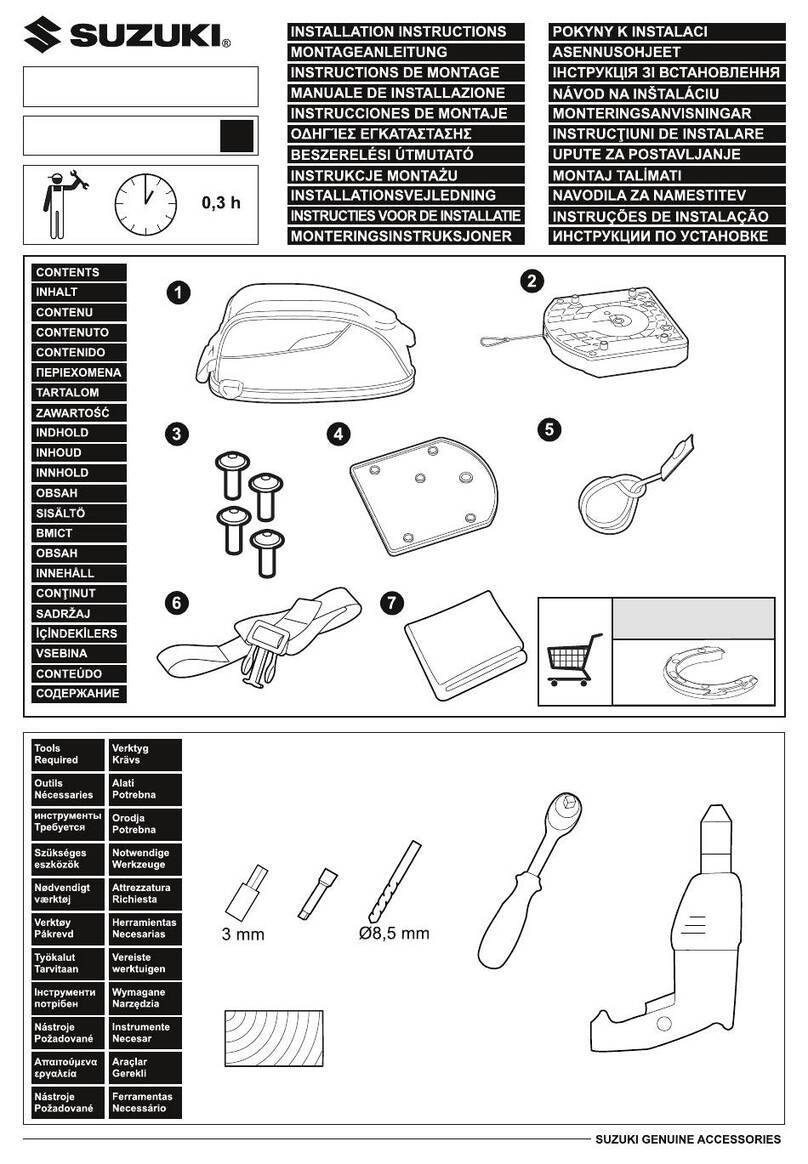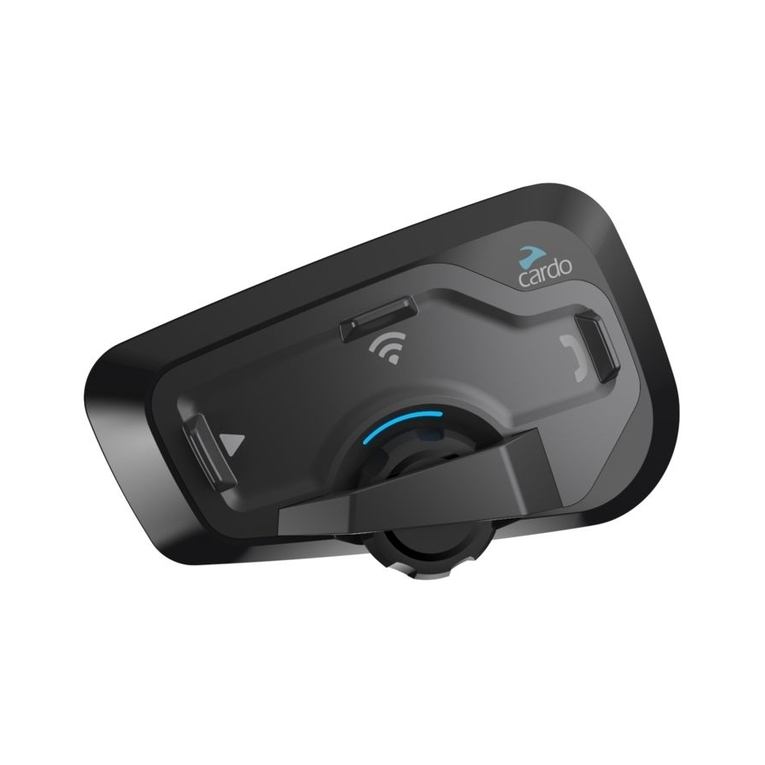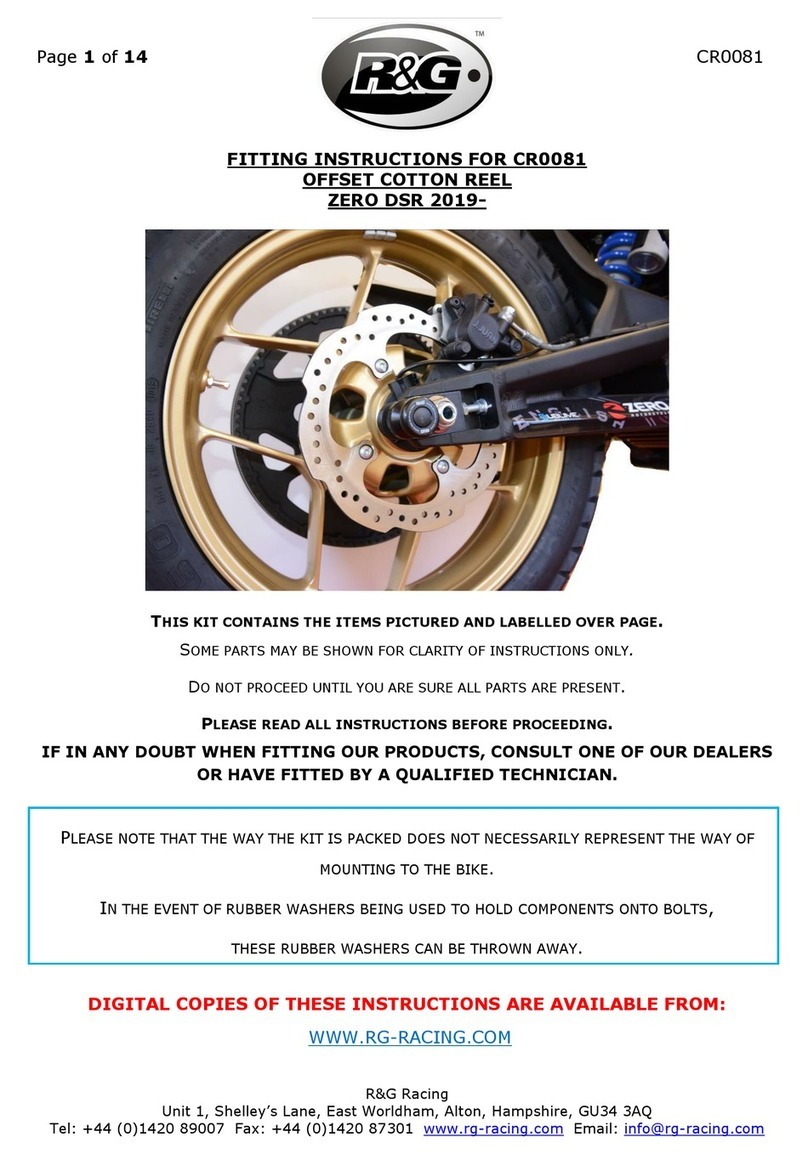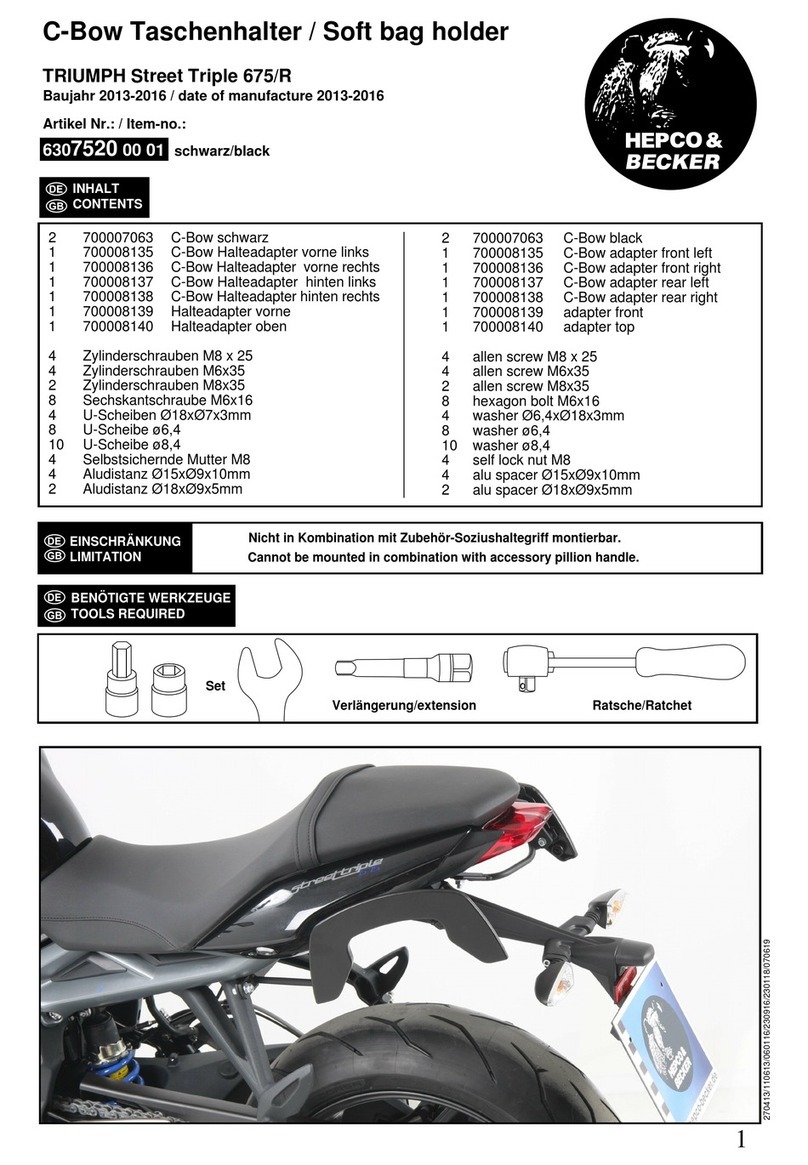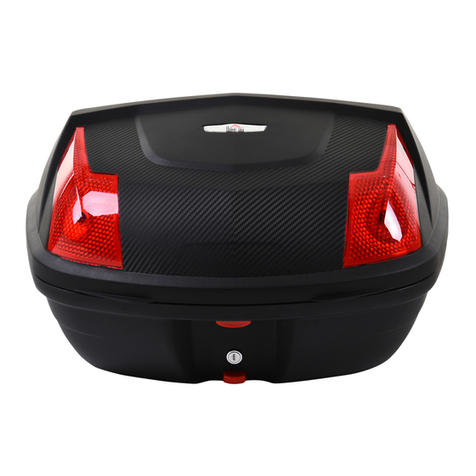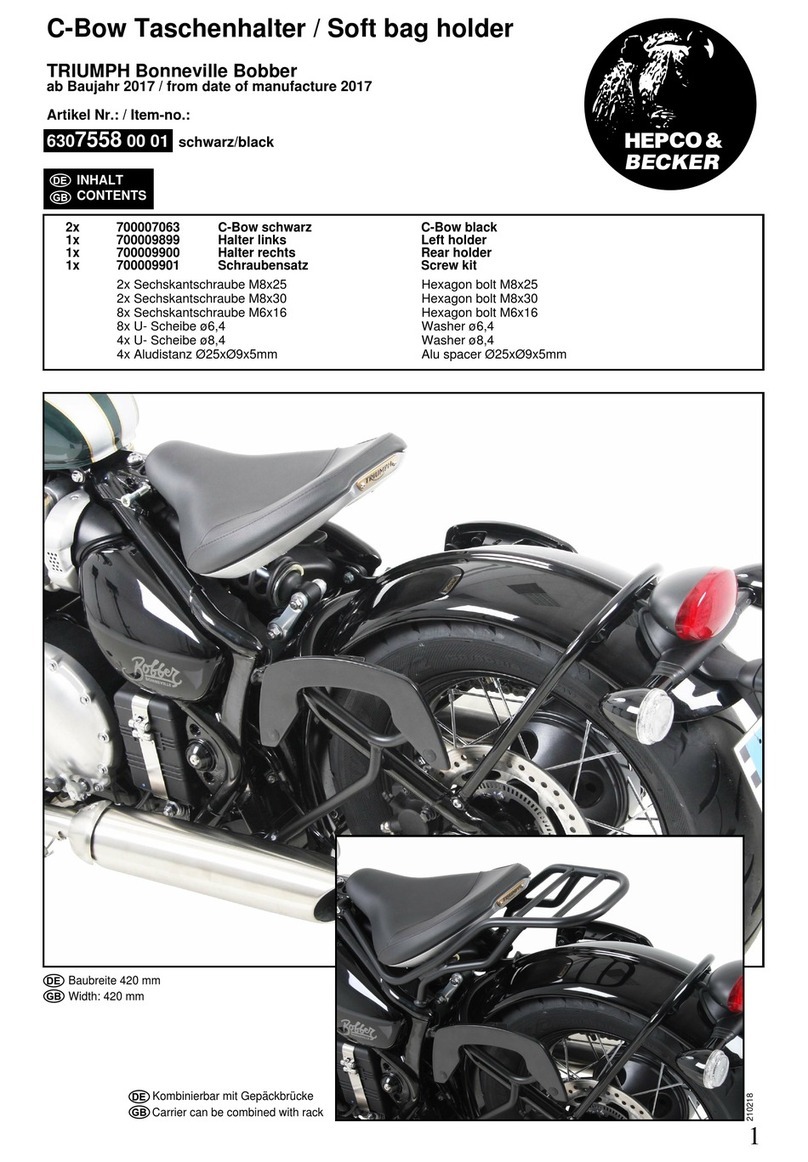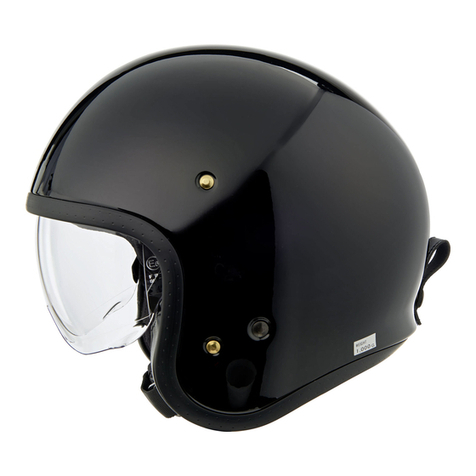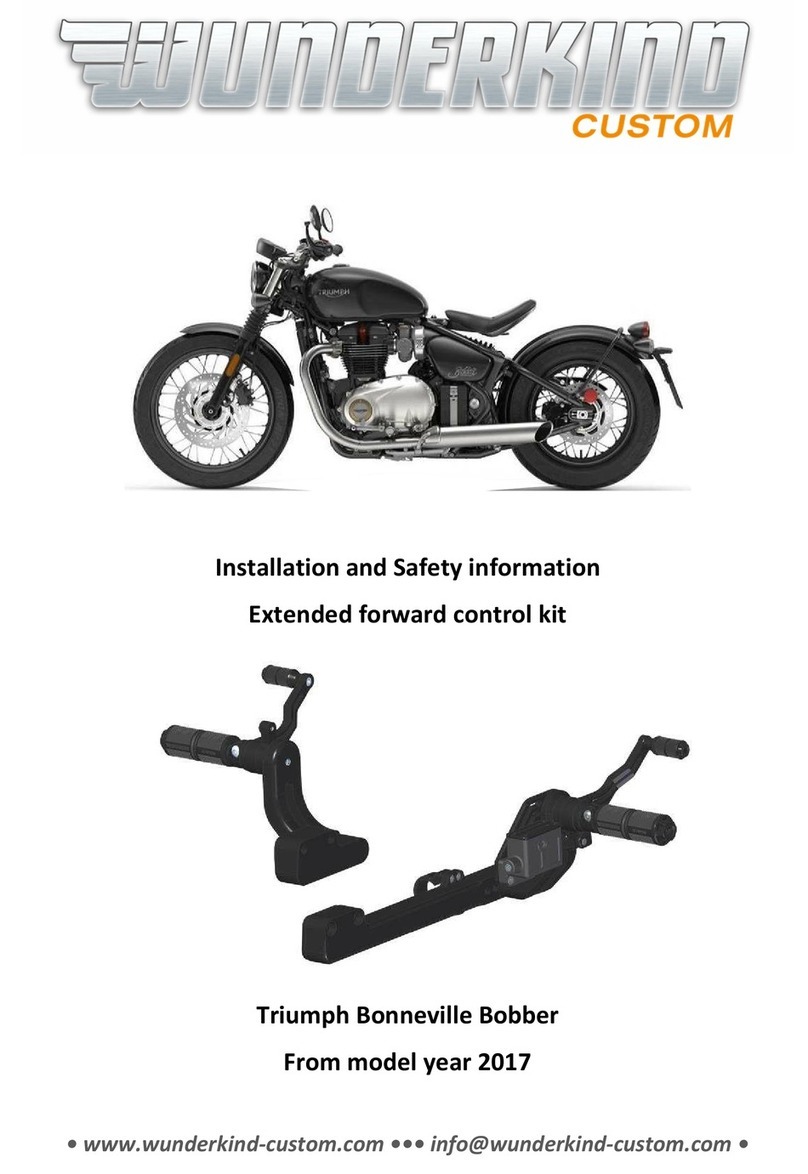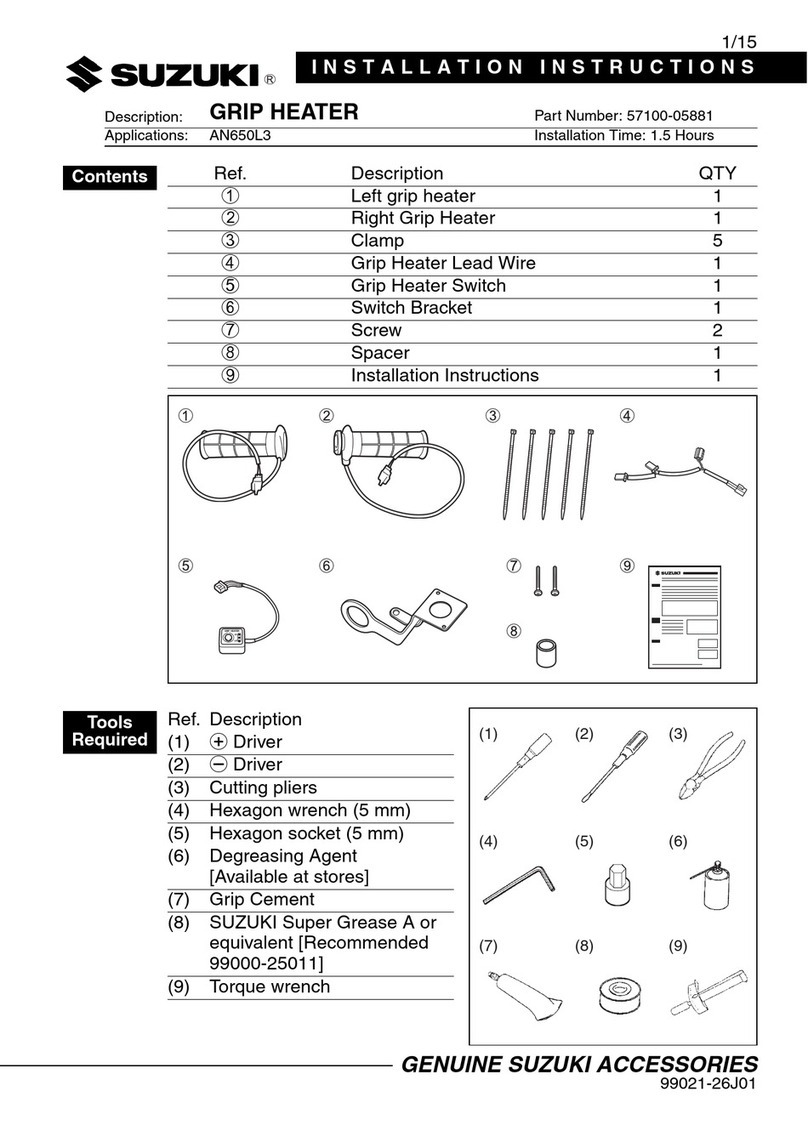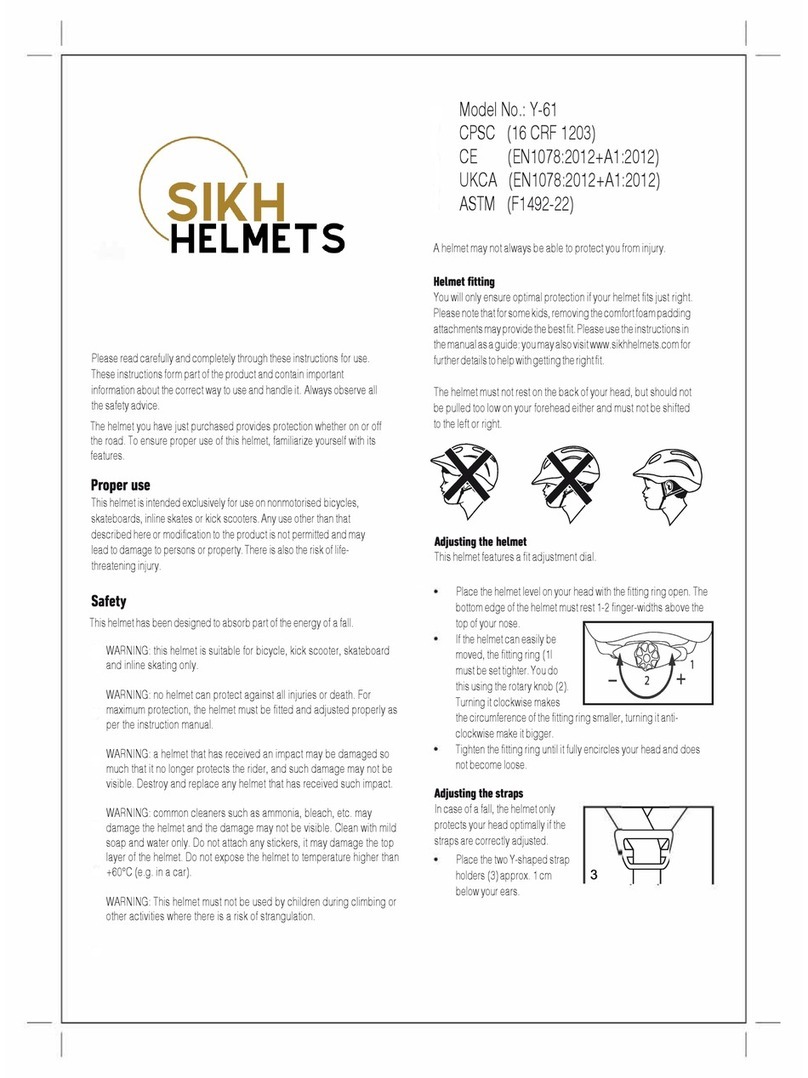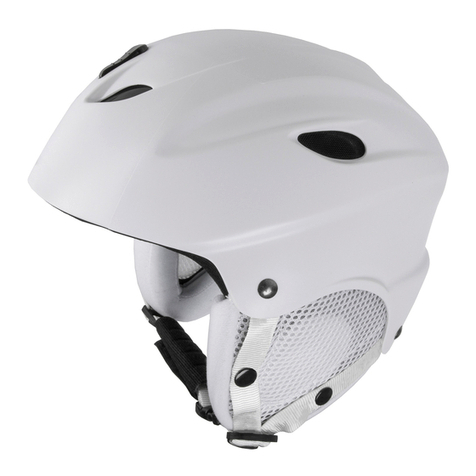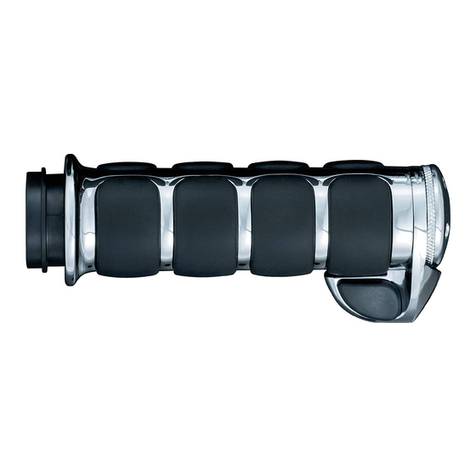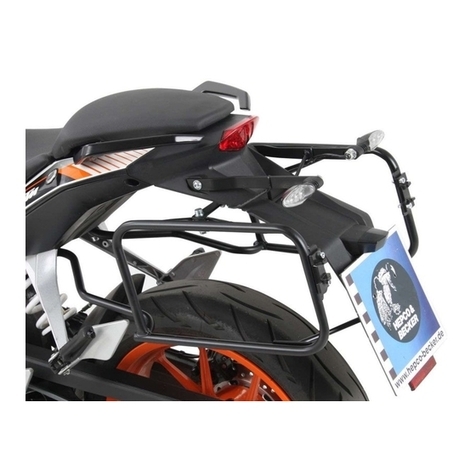
6
ABC
DEF
CHIN STRAP
Depending on the various versions and the
country concerned, your SHARK RIDILL helmet
is equipped with a chin strap with a “Precise
Lock” rapid buckle with a snap lock or one with a
double-D ring. Proper use of the chin strap is cri-
tical for proper performance of the helmet. Never
alter your chin strap in any way. For example, never
cut it or add holes, or apply buttons, studs or other
items to your chin strap. During the life of your
helmet, be sure that the chin strap never suffers
any type of abrasion or cut, and that its total length
does not change. If it does, replace your helmet.
PRECISE LOCK
The “Precise Lock” snap lock system gives you
precise and accurate adjustment because of the
considerable length of its notched section.
However, it is essential on purchase to adapt the
length of the chin strap to your measurements.
Adjust the length of the strap using the adjusting
buckle (Figs. A, B, C and D).
Choose your SHARK RIDILL helmet and attach
the holding system. When the “Precise Lock” is
adjusted to the medium position, the chin strap
must be correctly tensioned under the chin to
hold the helmet firmly without causing you any
discomfort or pain.
To fasten the chin strap, all you have to do is to
thread the tongue into its place on the buckle until
tension is perfect (Fig. E). The tongue connects and
is automatically blocked.
To release the chin strap, you have to pull on the
lever (Fig. F) and remove the tongue from the buc-
kle. Although the notched tongue enables you to
change the adjustment precisely on each use, it is
important to check frequently that the adjustment
of the strap length is correct.
WARNING! Never ride with the chin strap loose
or insufficiently tightened. Even though the
interior padding gives you the impression of being
held, your helmet risks coming off in a fall.
Never apply lubricating or acid products or grease or
solvents to the chin strap buckle parts.
DOUBLE-D RING
A - Slide the long part of the chin strap through
the two D rings, positioning the comfort pad correctly
between the chin strap and your neck.
B - Then bring the end of the chin strap
back through the lower of the two D rings
CHIN STRAP
